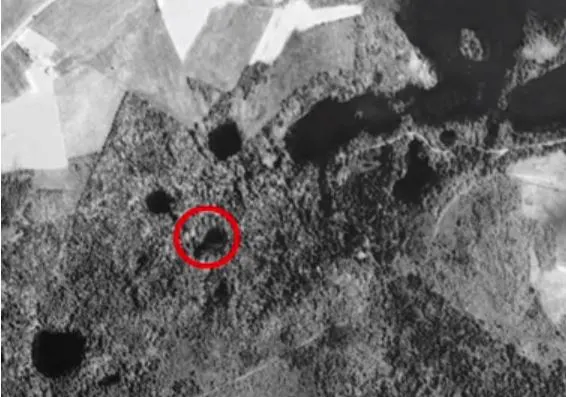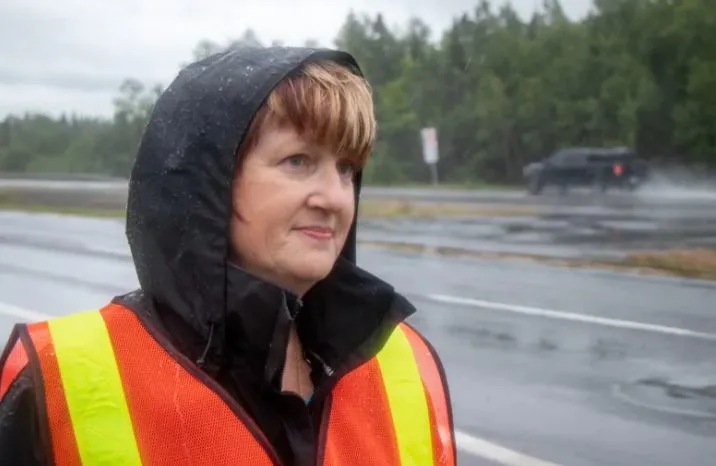
Trans-Canada Highway near Oxford, N.S., built over sinkhole
There's another sinkhole in Oxford, N.S., but this one is under the highway.
CBC News has collected aerial images from eight decades, dating back to the 1930s. The images are from the National Air Photo Library, an archive managed by Natural Resources Canada.
The library has more than six million aerial photographs, forming a quilt of coast-to-coast snapshots.
By watching the same spot, year after year, it's clear the Trans-Canada Highway was built over a sinkhole.
Above: Aerial photographs of the Oxford area, with a focus (red circle) on a sinkhole that is eventually covered by the construction of the Trans-Canada Highway. (National Air Photo Library (images)/Brett Ruskin (animation))
Many are calling for a detailed study of the ground beneath the highway.
"I'm not saying it's unsafe without looking into the details," said Hany El Naggar, a professor of geotechnical engineering at Dalhousie University in Halifax.
"But it may be unsafe. We don't know."
'FAILURE HAPPENS IN A SECOND'
The reoccurring pothole along the major link between Nova Scotia and the rest of Canada is a 1.3-kilometre drive from a massive sinkhole on the Lions Club property in Oxford that suddenly opened up last year, swallowing trees and picnic tables. It eventually filled with salty water, and is now approximately the size of an Olympic swimming pool.
El Naggar said modern construction techniques can handle sinkholes.
A special type of bridge is built over the hole. The bridge shifts the weight of the highway away from it.
But this technique wasn't used in the 1960s.
Instead, builders just filled the hole with rocks. That could be a recipe for disaster, if the floor of the sinkhole suddenly drops deeper.

Hany El Naggar is a professor of geotechnical engineering with more than 25 years of experience in civil engineering. (Brett Ruskin/CBC News)
"Failure happens in a second," said El Naggar. "We don't know exactly when this catastrophic scenario will happen."
He said provincial officials need to do something "yesterday" to fix the sinkhole under the highway.
'IT'S A BIG CONCERN'
"It's right in the travelling lane for major travel into the province," said Rachel Jones, chief administrative officer for the town of Oxford.
"So it is a big concern for us."
Nearly 10,000 vehicles use that stretch of highway each day.

Rachel Jones is CAO of the town of Oxford. (Robert Short/CBC)
"There's hazardous materials that go through there," Jones said. "Goods and services, school buses, families vacationing — there's all kinds of stuff going through there daily."
PROVINCIAL STUDY TO START IN 'NEXT FEW WEEKS'
CBC News requested an interview with Lloyd Hines, minister of transportation and infrastructure renewal, but the department declined.
Instead, the department emailed a statement, saying: "There have been no significant changes in the topography in the area around the sinkhole noted over the years.
"Safety of our roads and infrastructure is the highest priority of the department. In the interest of caution, we are doing a more in-depth geotechnical investigation at this location over the next few weeks to determine if there are any changes in the subsurface geology near the interchange. This will help identify any current or future impact to our highway infrastructure."









